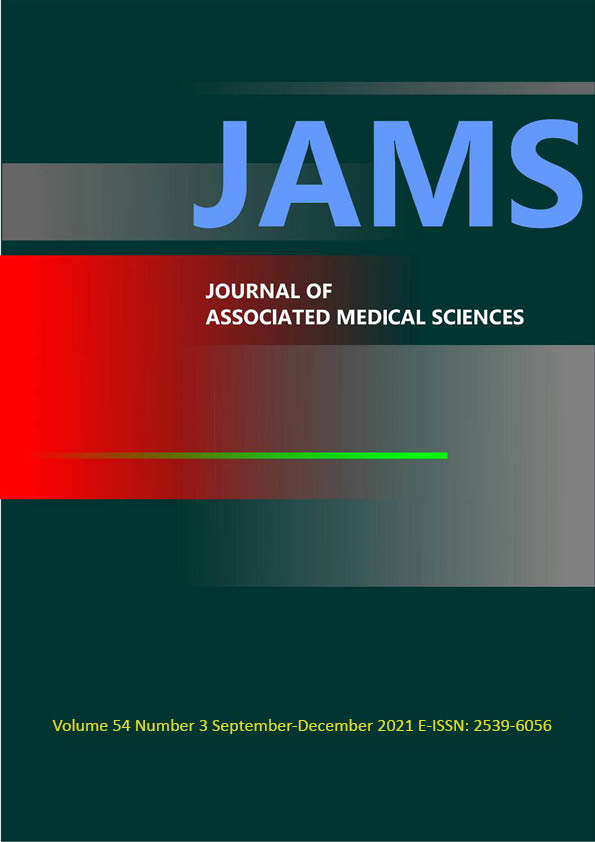Radiation emitted from patients undergoing nuclear medicine examination at Udonthani Cancer Hospital
Main Article Content
Abstract
Background: Diagnostic nuclear medicine involves intravenous injection of radiopharmaceutical substances into the patient, after which they still possess the substance within their bodies and depict mobile radiation sources. Although the amount of radiation emitted is little and harmless to others, practitioners in and outside the Division of Nuclear Medicine along with related personnel and relatives of the patient are anxious about radiation exposure from a patient undergoing nuclear medicine examination.
Objectives: This study aimed to measure radiation doses from the patients at different times and distances.
Materials and methods: The radiation dose was measured from 66 patients (19-79 years) undergoing bone scan, MUGA scan, and thyroid scan. The data were collected at different times intervals and different distances from the patients.
Results: The results showed that the radiation dose from patients after a bone scan and MUGA scan at a distance less than 0.50 meter was higher than 10 μSv/hr, which is the radiation exposure limit of the practitioner.
Conclusion: Results of this study are helpful in operation planning such as increasing the distance and reducing the time of close contact, which can ease anxiety of concerned personnel, while radiation practitioner training as well as educating patients and relatives must be carried out to encourage better understanding.
Article Details

This work is licensed under a Creative Commons Attribution-NonCommercial-NoDerivatives 4.0 International License.
Personal views expressed by the contributors in their articles are not necessarily those of the Journal of Associated Medical Sciences, Faculty of Associated Medical Sciences, Chiang Mai University.
References
Bayram T, Yilmaz AH, Demir M, Sonmez B. Radiation dose to technologists per nuclear medicine examination and estimation of annual dose. J Nucl Med Technol. 2011; 39(1): 55-9.
Gomez-Palacios M, Terrón JA, Domínguez P, Vera DR, Osuna RF. Radiation doses in the surroundings of patients undergoing nuclear medicine diagnostic studies. Health Phys. 2005; 89(2 Suppl): S27-34.
Stenstad L-I, Pedersen G, Landmark A, Brattheim B. Nuclear radiation dose to the surroundings from patients who are undergoing nuclear medicine examinations. Radiograph Open. 2014; 1: 11-8.
Castronovo FP. Time Dependent Radiation Exposures Surrounding Technetium-99m MDP Patients. J Nucl Med Technol 1991; 19(3): 182-4.
Chiesa C, De Sanctis V, Crippa F, Schiavini M, Fraigola CE, Bogni A, et al. Radiation dose to technicians per nuclear medicine procedure: comparison between technetium-99m, gallium-67, and iodine-131 radiotracers and fluorine-18 fluorodeoxyglucose. Eur J Nucl Med. 1997; 24(11): 1380-9.
Amaral A, Cabral G, Campos L, Guimarães MI. Exposure of persons accompanying patients in nuclear medicine departments. Cell Mol Biol 2002; 48(5): 505-9.
Harding LK, Bossuyt A, Pellet S, Reiners C, Talbot J. Radiation doses to those accompanying nuclear medicine department patients: a waiting room survey. EANM Task Group Explaining Risks. European Association of Nuclear Medicine. Eur J Nucl Med. 1994; 21(11): 1223-6.
Harding LK, Harding NJ, Warren H, Mills A, Thomson WH. The radiation dose to accompanying nurses, relatives and other patients in a nuclear medicine department waiting room. Nucl Med Commun. 1990; 11(1): 17-22.


